Kunsthistorisches Museum VanitasStillleben
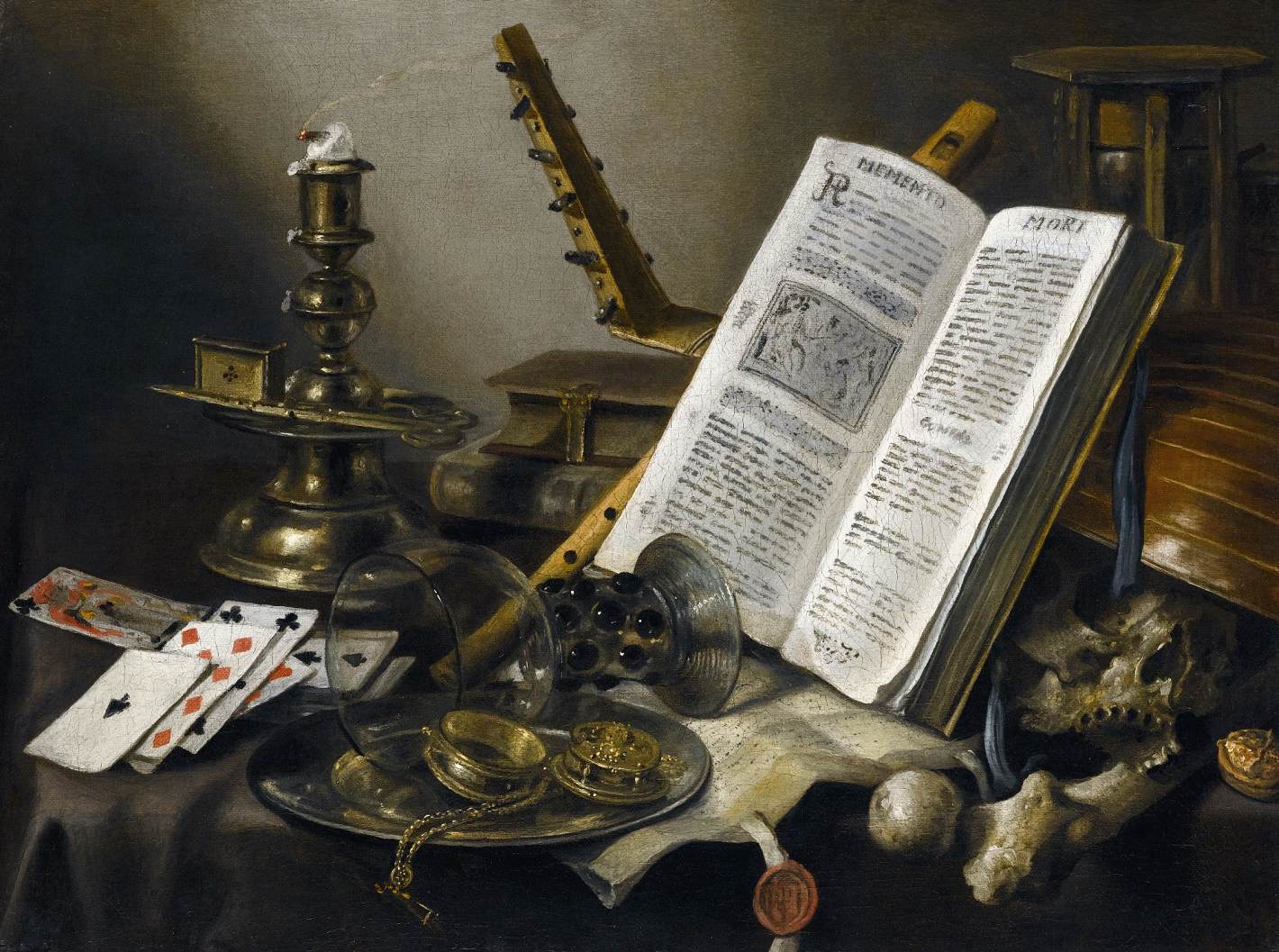
Vanitas. Still Life, 1660 Pieter Claesz
In this painting, Pieter Claesz, a German-born painter based in Haarlem, depicts human mortality with a skull and bone. The table is cluttered with other items suggesting transience and the futility of human pursuits. Along with an overturned chalice, there is a timepiece, a writer's quill, and a music manuscript.

Pieter Claesz, Vanitas with Violin and Glass Ball,1625 Mirror drawings, Baroque painting, Painting
The Collection European Paintings Still Life with a Skull and a Writing Quill Pieter Claesz Dutch 1628 On view at The Met Fifth Avenue in Gallery 520 In this still life, close observation and realistic detail operate in tension with explicit symbolism.

Vanitas Still Life by N. L. Peschier.
Pieter Claesz (1596/97-1660) Vanitas Still Life, 1630 Oil on panel 15 ½ x 22 in. (39.5 x 56 cm) Royal Picture Gallery Mauritshuis, The Hague Acquired in 1960 with the support of the Openbaar Kunstbezit Foundation and the Rembrandt Society Inv. no. 943 The vanitas image is a reminder of life's brevity and the worthlessness of material objects.
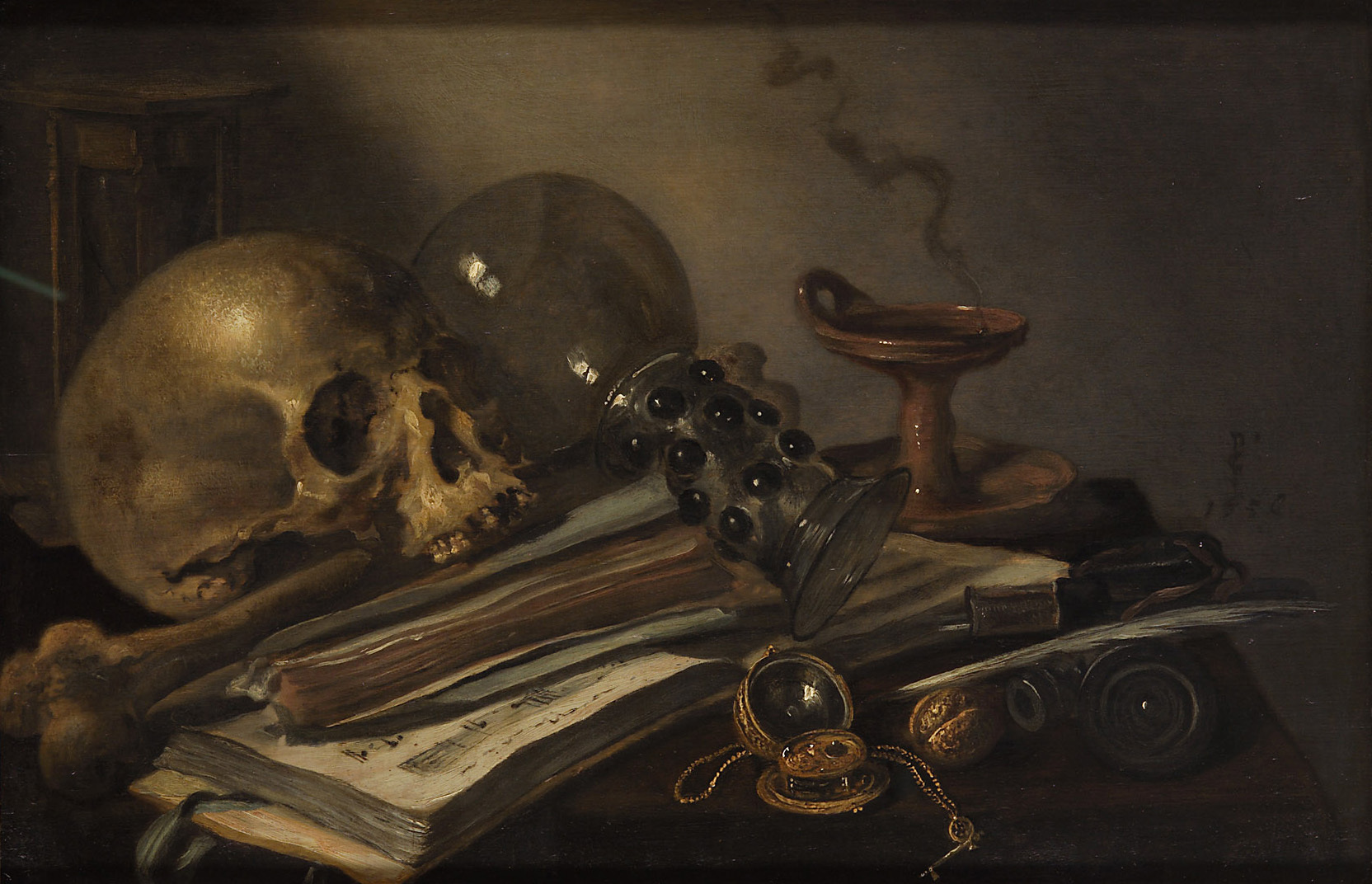
Kunsthistorisches Museum VanitasStillleben
In Pieter Claesz's Vanitas Still Life with Violin and Glass Ball of the same year in Nuremberg, the artist working at his easel is reflected in the glass ball , 7 and a painting from the same period in The Hague shows another painter working on a similar vanitas in his studio. 8. What is not clear is the extent to which Pieter Claesz is.

FilePieter CLAESZ. A still life with a roemer, a crab and a peeled lemon Google Art Project
A snuffed-out candle, an empty glass, a watch and a skull. This is no random collection of objects. Each one conveys a message of mortality. Memento mori - remember you must die.. The Haarlem artist Pieter Claesz became well-known for his still-lifes featuring a limited palette. In this painting, for example, besides using brown and green, he only used a dash of blue for the ribbon of the watch.

Sapori in concerto La Vanitas nella pittura dell'olandese Pieter Claesz
Renowned for producing vanitas still lifes at a rapid pace, the imagery in Pieter Claesz's Vanitas Still Life (1630) is saturated with symbolic potency: the golden pocket watch, the empty overturned glass, the skull and the unlit oil lamp allude to death, warning the viewer of the futility and meaninglessness of material goods and possessions. A seventeenth century viewer would have.

Pieter Claesz Vanitas Still Life With The Spinario Square Framed Mountless Art eBay
Pieter Claesz (c. 1597-1 January 1660) was a Dutch Golden Age painter of still lifes . He was born in Berchem, Belgium, near Antwerp, where he became a member of the Guild of St. Luke in 1620. He moved to Haarlem in 1620, where his son, the landscape painter Nicolaes Pieterszoon Berchem was born (October 1).
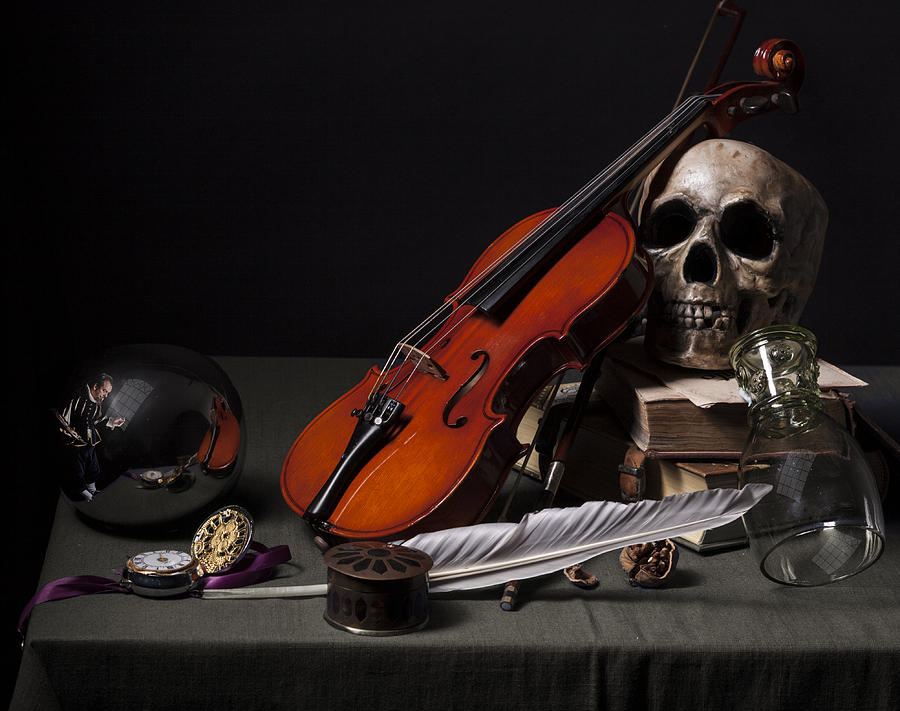
Pieter Claesz Vanitas paintings, Vanitas, Still life art
Pieter Claesz, (born 1597, Burgsteinfurt, bishopric of Münster [now Steinfurt, Germany]—buried January 1, 1661, Haarlem, Netherlands), Dutch painter who achieved a striking simplicity and atmospheric quality in still-life representations.

Vanitas Art Thinking on Scripture
Pieter Claesz became well-known for his still-life vanitas painting that used a limited palette. In Vanitas Still Life, for example, the painting is entirely cmposed of brown and green hues save for the dash of blue used to color the ribbon on the edge of the table. The result is a dark and sombre painting that recollects, earth, rot, and the.

Vanitas with Violin and Glass Ball by Pieter Claesz 1628 Life Is Beautiful
Artist Series Related artists From Erich Lessing Culture and Fine Arts Archive, Pieter Claesz, Vanitas (1656), Oil on panel, 39.5 × 60.5 cm

Pieter Claesz Wikipedia, the free encyclopedia Vanitas Pinterest Dutch, Vanitas and
Pieter Claesz Master of Haarlem Still Life. Vanitas Still Life with Overturned Gilded Cup and Chain, c.1630, oil on panel, 53 x 78 cm (20 7/8 x 30 11/16 in.),. Overview: 30 still-life paintings by 17th-century Dutch artist Pieter Claesz were included in this first international exhibition of his work, along with 6 still lifes by his.

Pieter Claesz. Stilleven met zoutpotje ca. 16401645 Olieverf op hout 52,8 x 44 cm
, 46 Source/Photographer https://resolver.kb.nl/resolve?urn=urn:gvn:FHM01:OS-68-158 Licensing[edit] This is a faithful photographic reproduction of a two-dimensional, work of art. The work of art itself is in the public domain for the following reason:
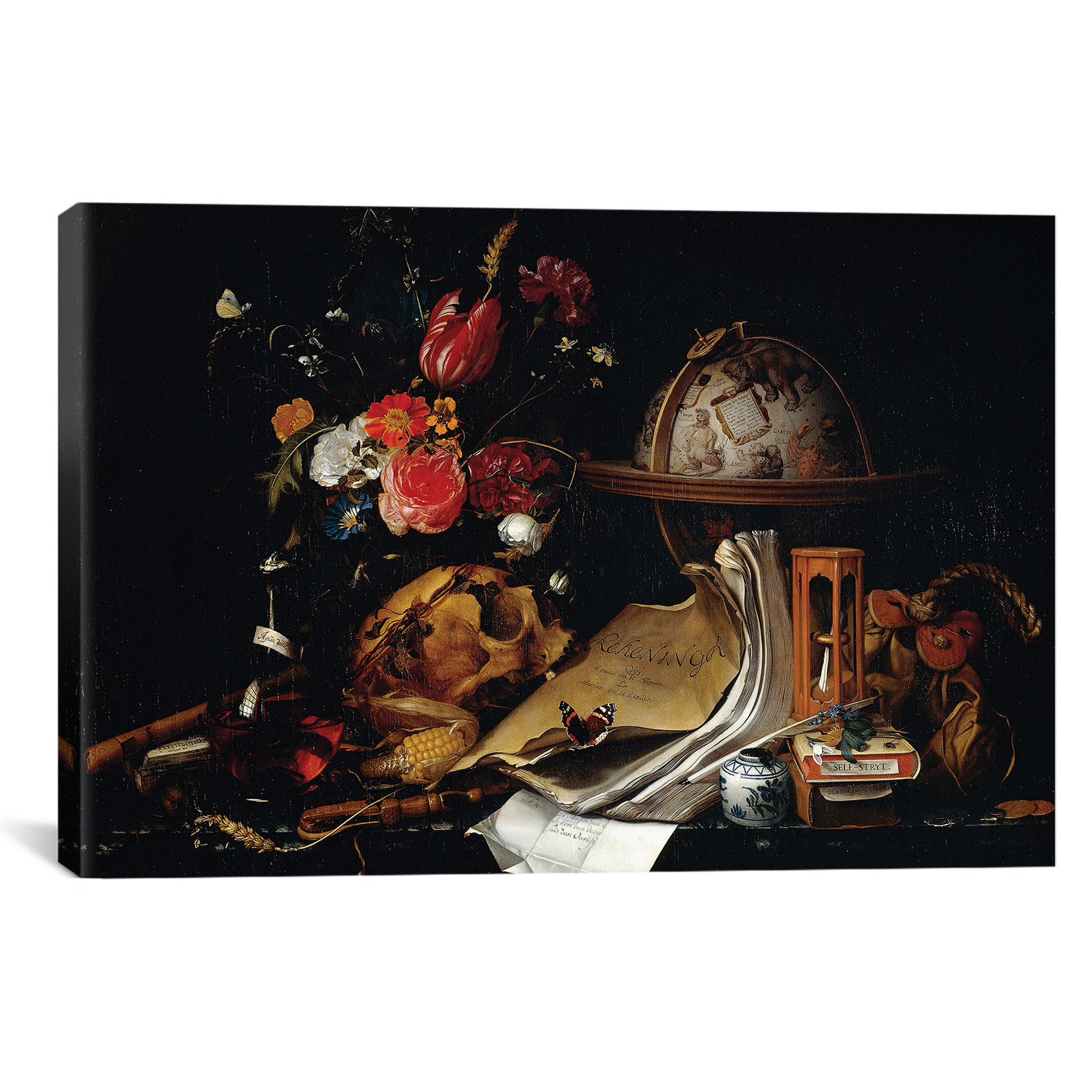
Vanitas // Pieter Claesz Classic & Contemporary Still Life Touch of Modern
Pieter Claesz, Still Life with Violin and Glass Ball, 1628. Image via Wikimedia Commons. As these paintings proliferated throughout the 17th century, artists used a great variety of objects to express the principles of vanitas. Skulls, snuffed candles, and burnt-out lamps were some of the most obvious symbols of mortality.
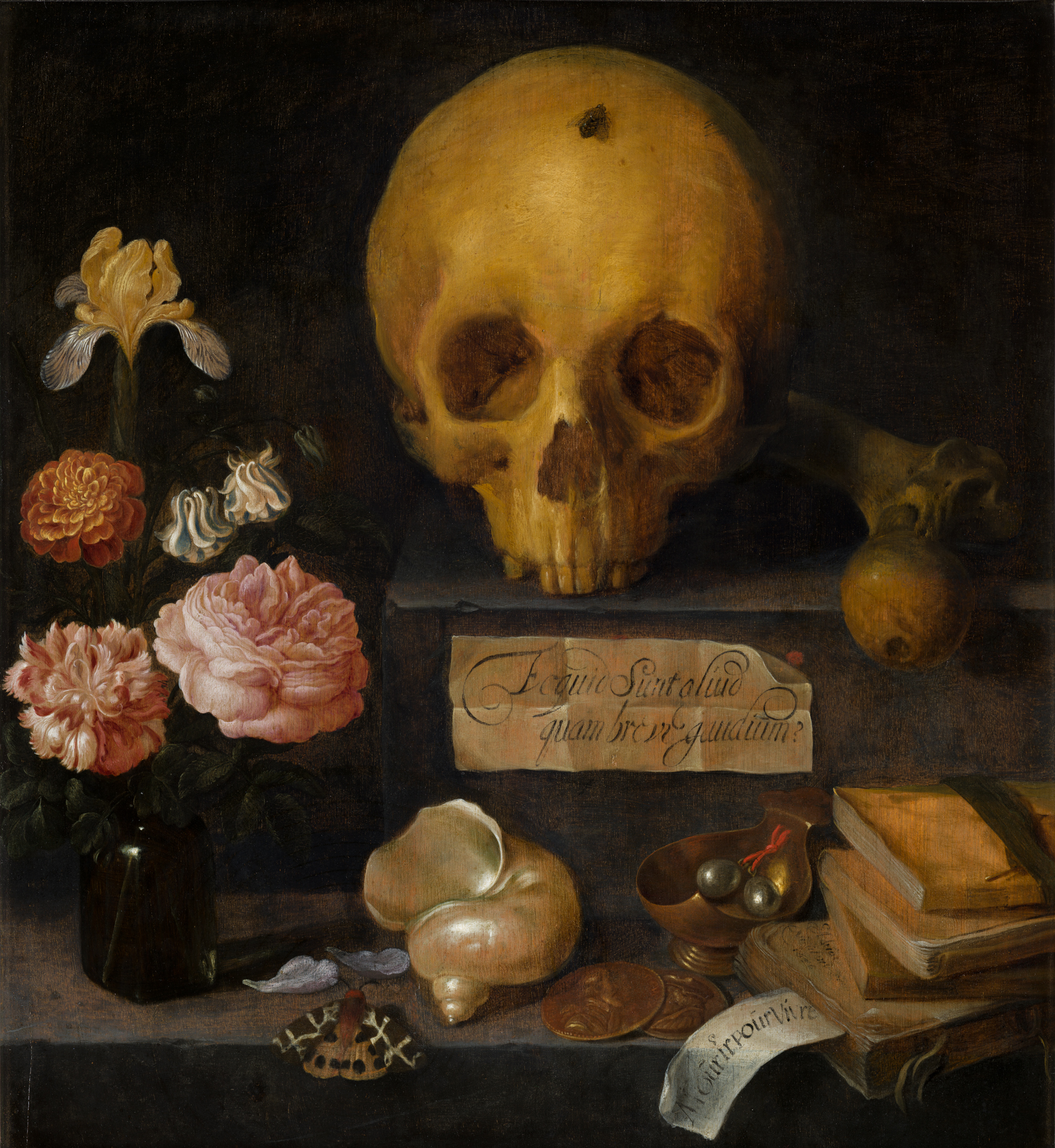
Vanitas Still Life Frans Hals Museum
Pieter Claesz was admired for his sensitive representation of light and texture, and subdued, monochrome colour palettes, typically consisting of subtle tonal harmonies of grey, green and brown, occasionally with a sharp burst of yellow provided by a peeled lemon, although his still life arrangements gradually became more lavish and richer in colour after his mid-40s.
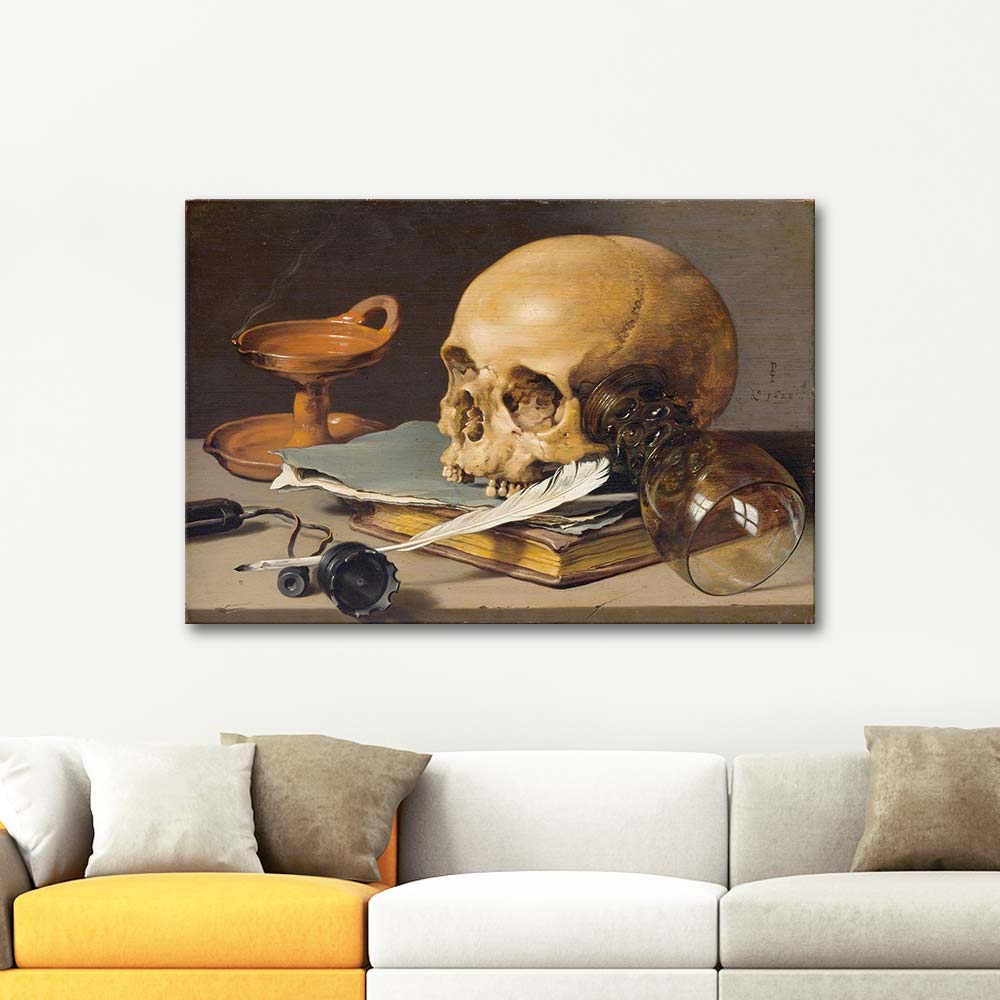
Pieter Claesz Vanitas Kanvas Tablo CANVASTAR
Details Title: Vanitas Still Life Creator: Pieter Claesz Date Created: 1625 Physical Dimensions: Panel, 29,5 × 34,4 cm Type: Painting; still life External Link: See more on the Frans Hals.
Pieter Claesz Vanitas Still Life (1630) r/museum
Pieter Claesz (c. 1597 - 1 January 1660) was a Dutch Golden Age painter of still lifes . Biography Vanitas with the Spinario, 1628, Rijksmuseum, Amsterdam. He was born in Berchem, Belgium, near Antwerp, where he became a member of the Guild of St. Luke in 1620.